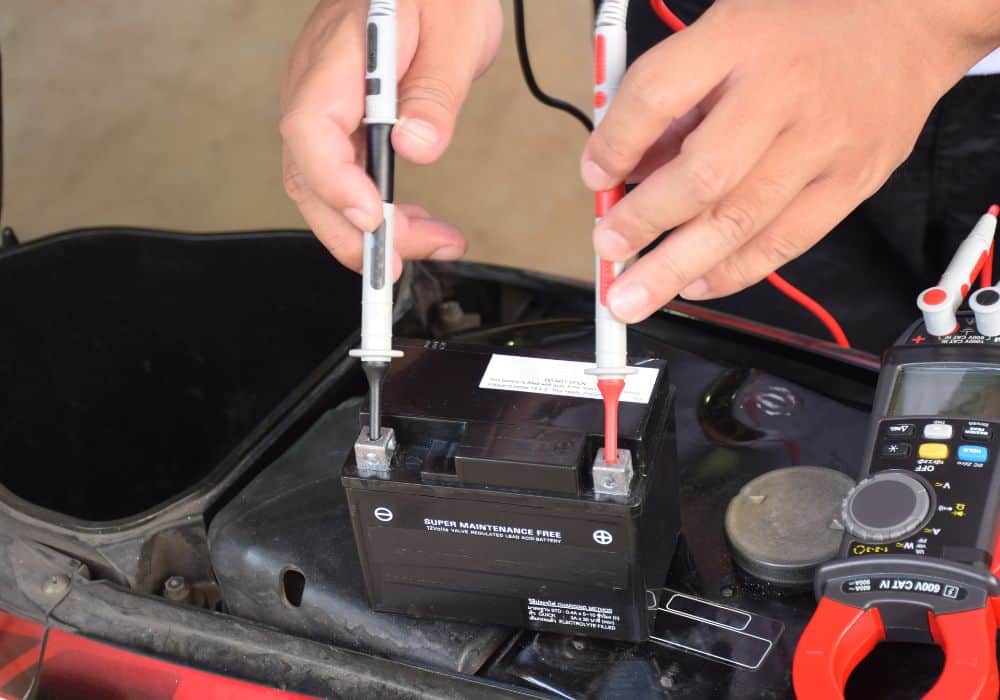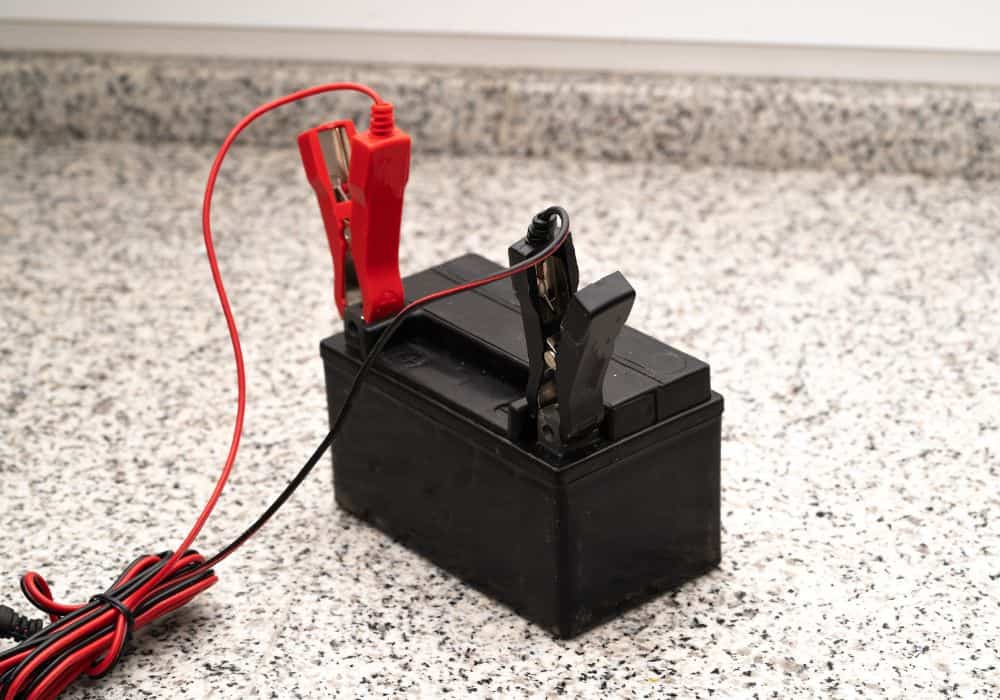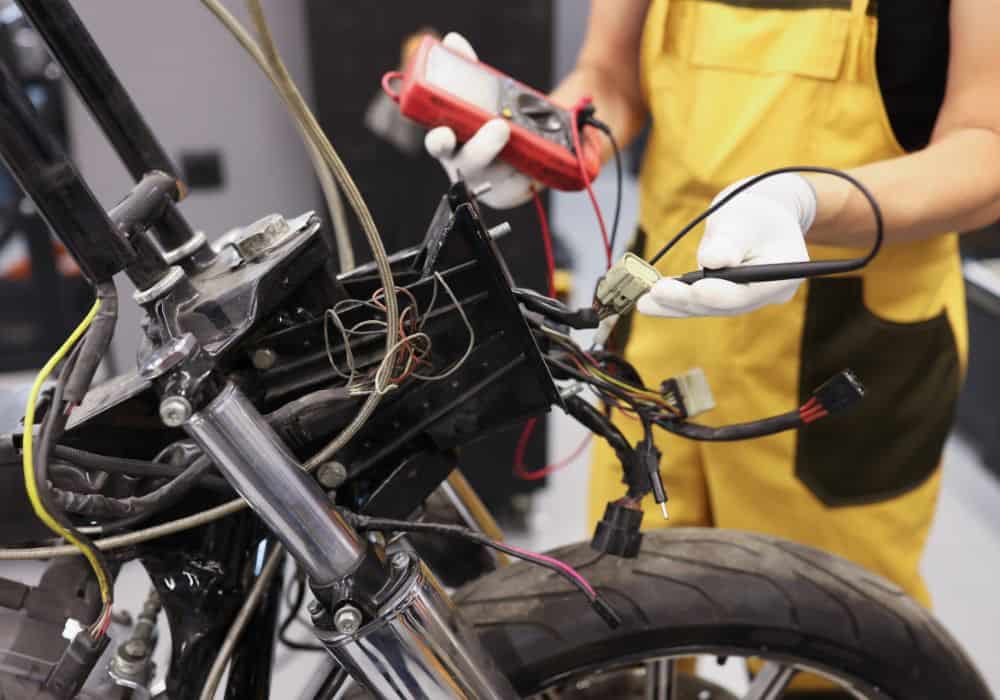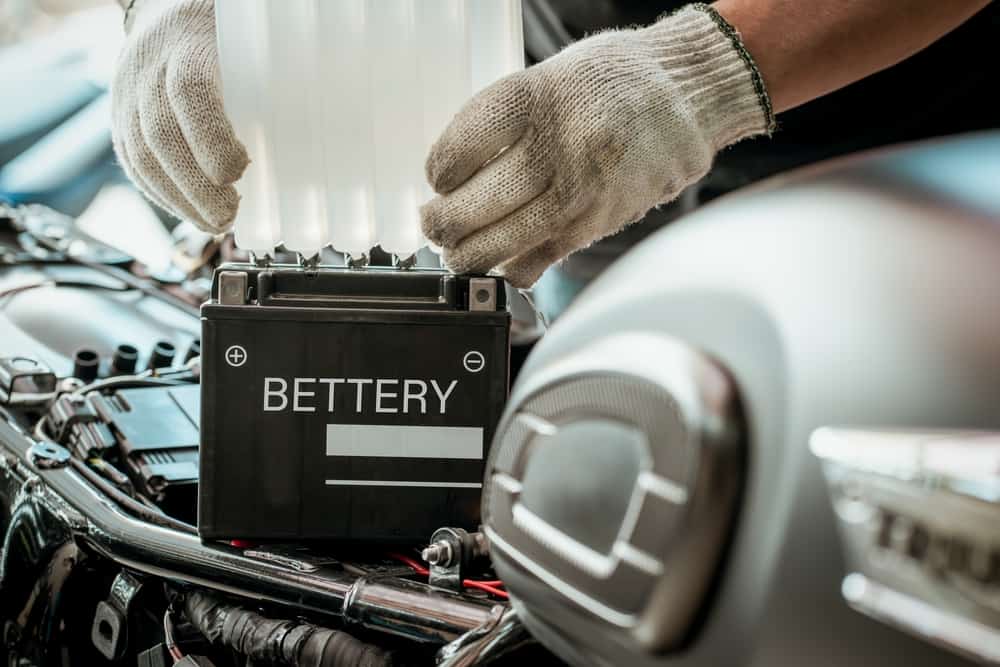Car and motorcycle batteries are powerful yet delicate tools in every sense of those words. This means that, while we can do a lot of things with them, we have to be careful as, in many cases, we risk damaging the battery or worse.
Here’s a key question – is charging a motorcycle batter at 2 amps safe? Additionally, why are many experts cautioning against it, what are the risks you should watch out for, and how can you avoid damaging the battery of your bike?
Table of Contents
- Is charging a motorcycle battery at 2 amps even safe?
- What is the right amperage for charging your motorcycle battery?
- What are the risks of overcharging your motorcycle battery?
- What are the benefits of charging your battery more slowly?
- Can you charge a motorcycle battery at 2 or 3 amps if it’s absolutely necessary and how?
- In conclusion – charging a motorcycle batter at 2 amps is a bad idea
Is charging a motorcycle battery at 2 amps even safe?
The short answer here is – not really, even though there are differences depending on the type of battery charger you’re using, the battery capacity, and more. The reason is simple – every battery is meant to be charged by a certain type of charger and at a certain rate.
For motorcycle batteries, that rate is almost always lower than 2 amps per hour so charging them at 2 amps leads to risks of deterioration, battery failure, and reducing the battery’s lifespan.
What is the right amperage for charging your motorcycle battery?
The rule you’ll see most experts cite is that a battery should never be charged at an amp hours rate that’s more than one-tenth of its rating. So, if you’ve got a 14-amp battery, you don’t really want to go over 1.4 amps per hour for 10 hours.
This way takes a longer time than using a 2 amps battery charge or higher but is significantly safer for your battery’s life. Using a higher amperage won’t take as long periods but the risk is usually not worth the reward.
What are the risks of overcharging your motorcycle battery?
The risks you can expect from overcharging your battery with the wrong amperage vary depending on the exact type of charger, the number of times you’ve done it, how old and deteriorated the battery is already, and other circumstantial and environmental factors.
Regardless, the risks are always there and rise the more you keep overcharging and using your bike battery.
1. You may boil your battery’s electrolytes
The simple truth that applies to most types of batteries such as wet cells, absorbed glass mats (AGM), lithium-ion batteries, and others, is that they can only safely handle a certain amount of electrolytes within their cells. Introducing way too much power, i.e. electrolytes, in such a battery runs the risk of overwhelming the battery cells, literally boiling the electrolytes within, and causing damage.
What’s worse is that this type of damage is often not noticeable at first because it starts slowly. Think of it as a bit of rot starting to spread through the inside of the battery – by the time you notice it, it’s usually too late.
So, when many people think that it’s not a problem to use a higher amperage special charger than the recommended 1/10th of the full motorcycle battery’s charge, they often miss the fact that their battery has already started having problems but they just don’t see them yet.
2. The battery’s plates may buckle from overheating

Overheating typically happens for one of two reasons – you’ve either 1) been charging the battery at the right amperage and voltage and at a slower rate but you’ve left it plugged in for too long, or 2) you’ve been using an overly high amp setting for your battery.
Doing either can lead not only to boiled electrolytes and bloated battery cells but even to buckled battery plates due to excessive overheating.
3. The battery might explode
This can seem like an exaggeration but batteries do explode when overheated and overcharged. All it takes is for some hydrogen gas to be released and for there to be a spark. In the right circumstances, the risk of that wouldn’t be all that great but it’s always there – especially if you’ve overheated and overcharged your battery repeatedly before.
What are the benefits of charging your battery more slowly?
As you’d assume, the benefits of slow-charging your motorcycle battery with the appropriate charger are prolonging the battery’s life and avoiding any of the risks we mentioned above. Namely:
1. Less stress on the battery
The main benefit of always using the appropriate charger for your motorcycle battery is removing any risk of stress on the battery. With no overheating on the battery’s fluids, cells, and electrolytes, there’s no risk of slowly deteriorating the battery’s health, bloating the battery cells, and reducing its lifespan.
2. No risk of overcharging

The next clear benefit is that the risk of overcharging and accidentally exploding your battery also becomes minimal. This is especially key if you’ve done something else wrong such as letting your battery charge for longer than you should – the lower the amperage of the charger in that case, the lower the risk of an accident.
3. Great for long-term storage
Slow-charging your battery with the right charger is also the right move when you need to keep your battery in storage for a while – something pretty common for motorcycle batteries. That’s because stored batteries still benefit from having energy flow through them as that keeps them alive and functional, and it also prevents the formation of sulfate which can clog the battery.
The key about charging in storage, however, is that it’s even more important that it’s slow and more manageable – just enough to keep the battery active but not risk any damage.
Can you charge a motorcycle battery at 2 or 3 amps if it’s absolutely necessary and how?
So, if you don’t have a charger of the right amperage with you but you absolutely need to charge your motorcycle battery with 2 amps or more, what’s the right way to do so with minimal risk?
Of the three main types of chargers – trickle-charger, smart charger, and float chargers, trickle chargers are the safest for slow-charging and storage long-term charging as they are designed to charge the battery slowly.
Modern smart chargers can also work as many of them offer detailed information on the battery’s health, charging progress, amp settings, and more. Many even have an automatic shut-off function and an alarm in case of issues.
How to charge your motorcycle battery?

After that, just plug the battery in properly by plugging the positive cable in the positive (usually red) terminal and the negative cable in the negative (usually black) terminal.
Then, just leave the battery charging for the appropriate amount of time – typically, that should be 10 hours as the charger is supposed to charge at a rate of 1/10th of the battery’s total amperage per hour.
Since, in this scenario, the charger’s amperage is higher, you should leave it on for a shorter period of time. For example, if your battery has an amperage of 14 and your charger works at 2 amps per hour at a minimum, you shouldn’t leave it on for more than 7 hours as that is guaranteed to overcharge the battery.
An extra trick for safety
Another very handy trick to use – especially when the amperage difference between the charger and the battery is too great – is to charge a lightbulb or two together with the battery.
This can sound strange but is a safe and easy solution to employ – just take a standard test light or a simple taillight bulb and insert it between the battery and the positive side of the charger.
A standard test light or taillight bulb draws about 2.25 amps per hour. So, if you’ve got an overly powerful charger of ~4 amps, for example, you can hook the test light in parallel before the battery – that way, the bulb will take ~2.25 amps per hour off the charger and there will be less than 2 amps leftover for the battery, thus preventing overheating.
If all you have is an even stronger charger – say, 6 amps – you can do the same but with two test lights hooked in parallel before the charger. Just make sure that you do connect them in parallel and not in series as the latter method will only reduce the volts going to the battery but the full current will still get to it.
In conclusion – charging a motorcycle batter at 2 amps is a bad idea
As you can see, the simplest answer is that charging a motorcycle battery at 2 amps is not a good idea as it could easily damage your battery over time if it’s not meant to take that high of an amperage. The reason some people do it anyway is that the effect is often not immediate and many make the mistake of thinking we’re exaggerating.
And we get the logic – “I’ve done it before and nothing happened, so it’s obviously not a big deal.” As with most other things that involve risk and chance, however, the point isn’t that it’s dangerous every time but that it’s not worth the risk.
So, if you absolutely have to charge a motorcycle battery at 2 amps once and there is no other choice – you can try. But don’t do it if you have alternatives, if it’s not urgent, and especially if you’ve had to do it repeatedly.
